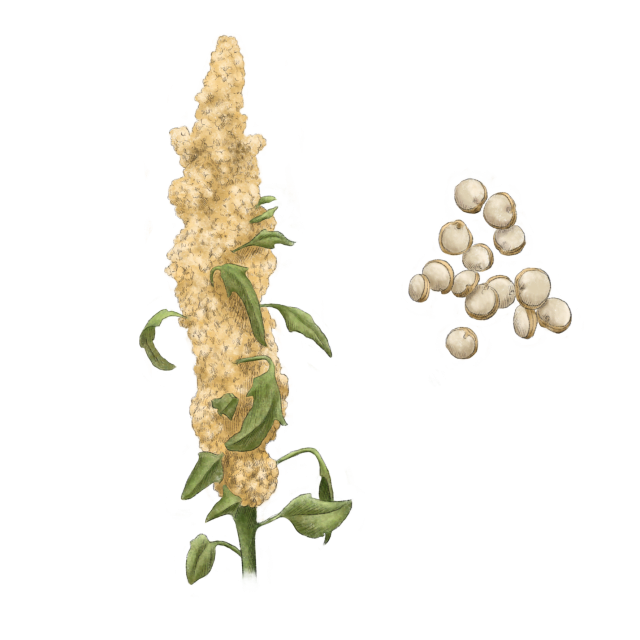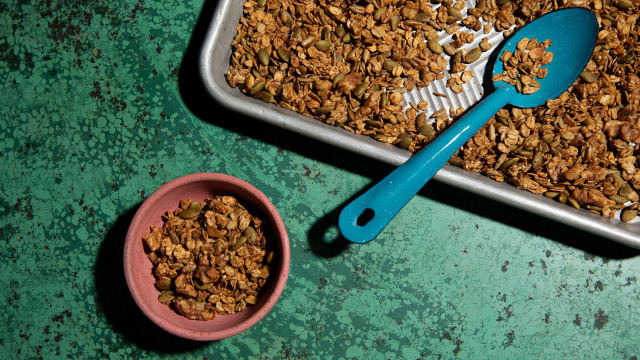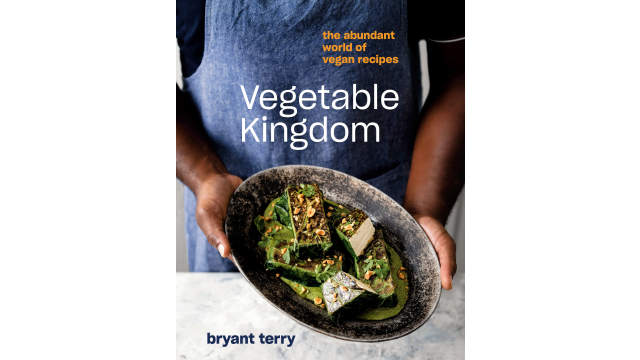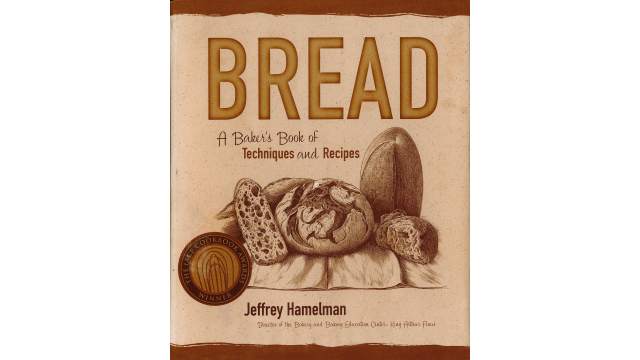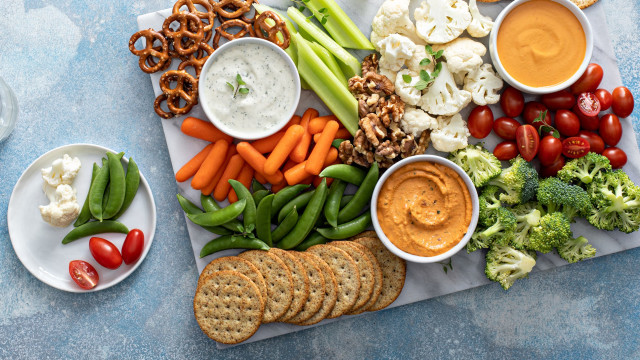Millet
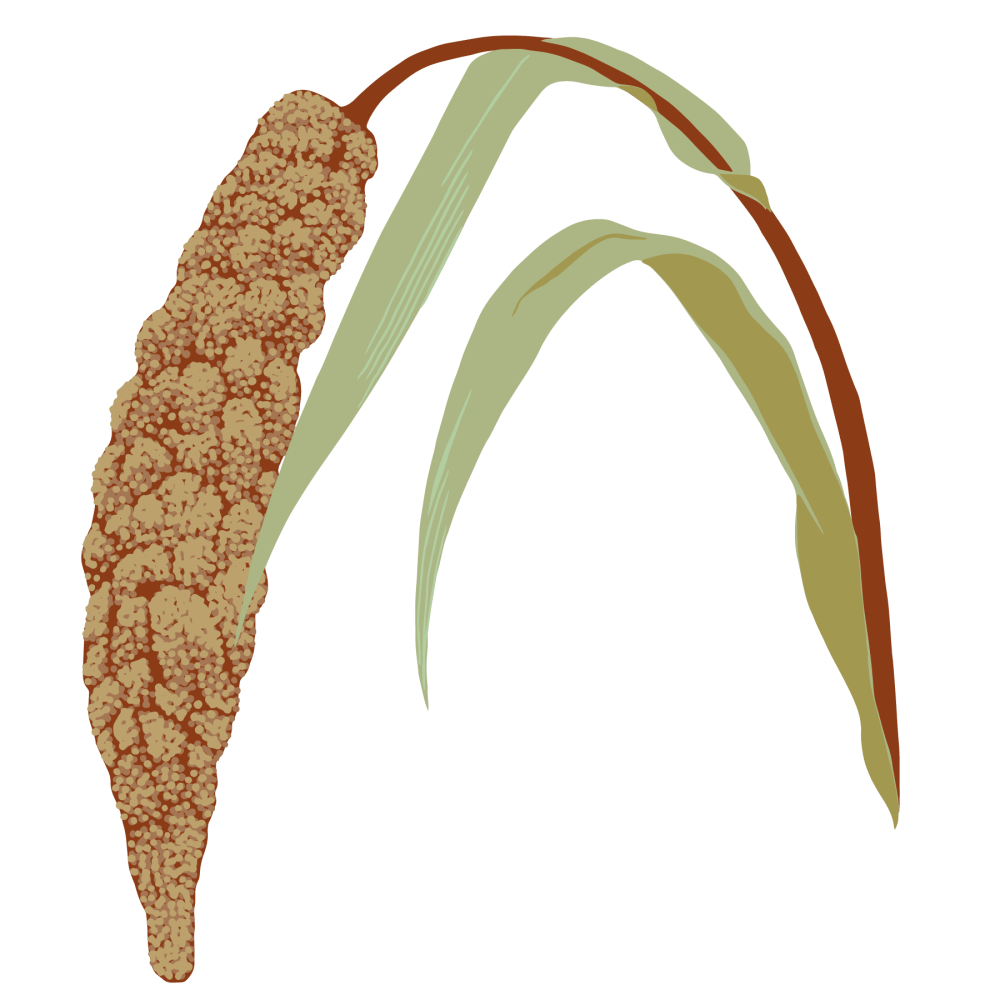
Latin name: (Several species) Eleusine coracana, Panicum miliaceum, P. sumatrense, Pennisetum glaucum, Setaria italica
Uses: grain, alcohol
What is millet?
Like other cereals, millet is a grass. Westerners may know it best as the tiny, shiny white seeds in bags of bird food. But millet is a critically important staple food for a third of the globe, eaten throughout regions of South and Southeast Asia and the Sahel of central Africa. Millet porridges have been part of the human diet for at least 10,000 years — millet traces from around 2,000 BCE comprised the oldest archaeological evidence of Chinese noodles.
Why is millet healthy?
Studies show that consuming a variety of grains is better for your health, so consider adding millet into your regular rotation. Like quinoa, this gluten-free ancient grain is a good source of protein, fiber, minerals, and antioxidants, and has been found to help control blood sugar, lower cholesterol, and support digestive health.
What does millet taste like?
Millet has a flavor similar to spelt or mild corn. It’s a little bit sweet, and toasted millet takes on a lovely nuttiness.
How do I use millet?
When it comes to cooking, you can treat millet interchangeably with white rice. It’s best toasted in the pan before simmering for 15 minutes, then fluffed like rice after resting. (Millet can also be prepared in a rice cooker.) In Korea and Japan, millet is often added to rice to boost its nutrition. Add it to your favorite pilafs to give them more complexity.
What does millet pair well with?
Millet congee is a hearty and satisfying porridge perfect for cool weather. Add pumpkin or sweet potato and Chinese dates and serve it with sugar or syrup, or you can cook it with wood ear mushrooms and broth and serve it with a dribble of chile oil and sliced scallions. In Germany, sweet millet porridge is made with apples and honey. Run with this theme by adding nuts and chia seeds, simmering the grains with dried fruit, and pouring on a little warm milk or cream. Hausa people of western Africa use millet to make hausa koko, a gingery, spicy fermented porridge that’s pleasantly sour (think sourdough).
Speaking of bread, you can add millet to your favorite whole-grain bread recipes or use millet flour either alone or with other flours for gluten-free baking. In India it’s used for a whole range of flatbreads.
Where does millet grow?
The various grass species we call millet were domesticated in various places throughout East Asia, the Indian Subcontinent, and the Sahel of West and East Africa. Unlike their cousins corn and rice, millet is drought-tolerant and can be grown on marginal to poor soils, which is precisely why it’s such an important crop in arid regions. In the US, most millet is grown in the Eastern Plains region of Colorado.
How to buy millet:
The grains should smell fresh, not stale or musty.
Fun millet fact:
Made from fermented millet, raksi (rakshi) is a type of moonshine commonly distilled in Himalayan households. It’s a widely popular drink throughout the region for celebrations, but it’s also served in special bhatti glasses for religious rituals.


